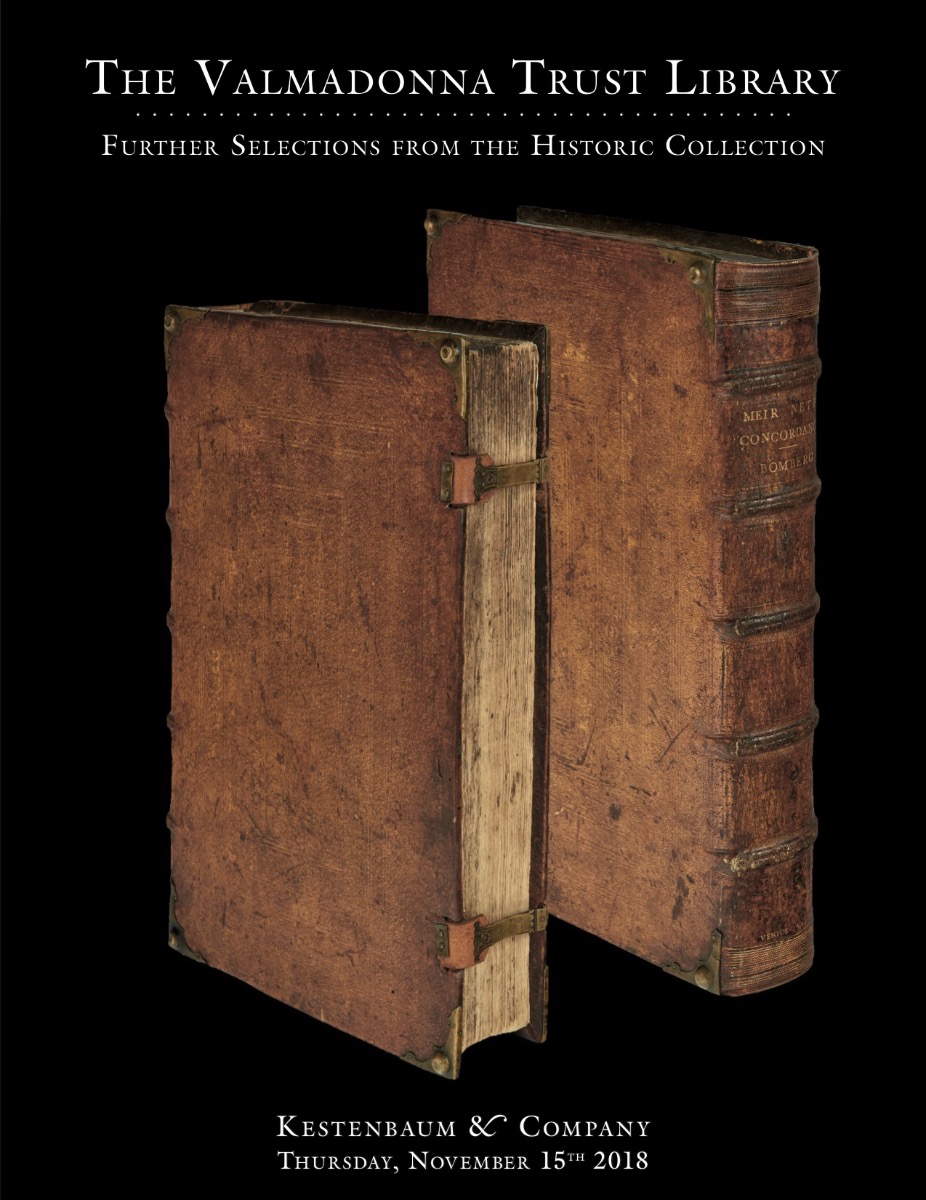Machzor mikol HaShanah [festival prayers for the entire year]. According to Aschkenazi rite. With Kabbalistic commentaries.

AUCTION 79 |
Thursday, November 15th,
2018 at 1:00 PM
The Valmadonna Trust Library: Further Selections from the Historic Collection. * Hebrew Printing in America. * Graphic & Ceremonial Art
Lot 86
(LITURGY)
Machzor mikol HaShanah [festival prayers for the entire year]. According to Aschkenazi rite. With Kabbalistic commentaries.
Sabionetta - Cremona: Tobias Foa - Jacob Cohen of Gazolo 1557-60
Est: $4,000 - $6,000
PRICE REALIZED $6,000
<<RARE, BIBLIOPHILIC EDITION. SECOND PART PRINTED ENTIRELY ON BLUE PAPER>> (ff. 193-394). See Treasures of the Valmadonna Trust Library - Otzroth Ya’akov, Colored Paper no. 12.
The publication of this important Aschkenazic Machzor has engendered much bibliographical discussion. Begun in Sabbioneta in 1557 in the house of Tobias Foa, it was completed in Cremona on the eve of the New Year [5]321 (1560) by Vicenzo Conti (as explained in the colophon at the end of the volume). From a typographical perspective, the Machzor is something of a mystery. Considering it was printed in two different cities, clearly the transition was hardly seamless. The great bibliographers, such as Steinschneider, Sonne, Berliner, Rivkind and Benayahu have tried to make sense of the way in which various letters occur in the edition. For a thorough study in this regard, see Benayahu, HaDephus Ha’Ivri BeCremona (1971) pp. 139-178.
